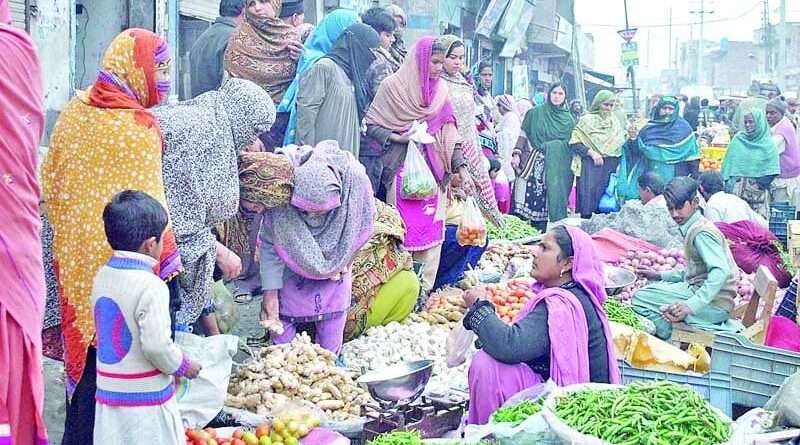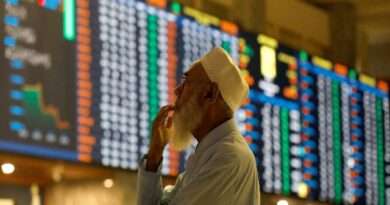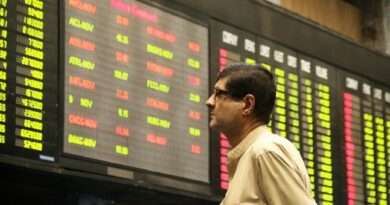Inflation Hits 18-Week High: Food Prices Drive Surge in Short-Term Inflation
|
Getting your Trinity Audio player ready...
|
Introduction: Inflation on the Rise in Pakistan
In a concerning development for Pakistan’s economy, the weekly inflation, as measured by the Sensitive Price Indicator (SPI), has surged to an 18-week high of 0.67% for the week ending November 21, 2024. This marks the fourth consecutive week of rising inflation, primarily driven by escalating food prices. This trend has raised alarm bells for both consumers and policymakers alike, signaling potential challenges ahead for the economy.
Weekly Inflation Data: Analyzing the Surge
According to official data from the Pakistan Bureau of Statistics (PBS), the weekly inflation rate increased by 0.67%, making it the highest spike since July 18, 2024. While the year-on-year inflation rate of 4.92% was observed, it was still close to a six-year low of 4.16%, recorded in the previous week. Despite the mild improvement in the year-on-year figures, the short-term inflation trend continues to show an upward trajectory.
Factors Driving the Inflation Increase
Several essential goods have contributed to the rise in weekly inflation. Among these, the price hike in ladies’ footwear stands out. Ladies’ sandals saw an eye-popping increase of 55.62%, climbing to Rs1,399 per pair compared to Rs899 in the previous week. This dramatic price jump indicates the volatility in the prices of goods, affecting various sectors of the economy.
Another significant contributor to the inflation surge was the price of tomatoes, which rose by 20.72%, reaching Rs190.30 per kilogram from Rs157.64 in the previous week. Similarly, potatoes saw a 3.81% price increase, from Rs108.32 to Rs112.45 per kilogram. Garlic also became significantly costlier, surging by 3.42%, reaching Rs666.57 per kilogram compared to Rs644.54 the week before.
Additionally, the cost of eggs rose by 3.16%, now priced at Rs353.67 per dozen, compared to Rs342.85 in the preceding week.
Impact on Other Commodities
Many other essential commodities experienced price hikes, with some seeing increases of up to 2.30%. These include:
- Vegetable ghee
- Mustard oil
- Onions
- Shirting fabric
- Beef
- Mutton
- Fresh milk
- Pulses
The price fluctuations of these basic items have a significant impact on consumers’ day-to-day expenses, further burdening households across the nation.
SPI Data Breakdown
The SPI comprises 51 essential items, for which the PBS collects data from 50 markets across 17 cities. In the week under review, out of the 51 items, 17 items (33.33%) saw price increases, while 11 items (21.57%) experienced price decreases. 23 items (45.10%) remained unchanged in price when compared to the previous week.
This breakdown highlights the volatile nature of inflation, where a number of key commodities are undergoing price changes, making it difficult for consumers to maintain a stable budget.
Government’s Stance and Expert Views
Recently, Finance Minister Muhammad Aurangzeb expressed surprise at the increase in food prices, particularly the hike in chicken and pulse prices. He attributed the rising costs to the actions of middlemen, who were reportedly inflating the prices of commodities in local markets. This trend is especially puzzling given the downward price trend in international markets. The situation points to potential inefficiencies in the supply chain, which are contributing to local price hikes.
Experts have identified a variety of factors driving the fluctuation in commodity prices. These include:
- Reduced vegetable production: Adverse weather conditions have led to a decrease in the production of key vegetables, causing shortages and price hikes.
- Population surge: Pakistan’s growing population has put additional pressure on the availability of essential goods.
- Inadequate storage capacity: A lack of sufficient storage for perishable goods, such as fruits and vegetables, exacerbates the problem, especially during off-seasons.
- Exportation of underproduced crops: The export of crops like onions and sugar, whose production has been less than anticipated, has further reduced local supply, driving up prices.
Year-on-Year Trend: A Deeper Look
On a year-on-year basis, the inflationary trend shows a marked increase of 4.92%. When compared to the same week of the previous year, ladies’ sandals have become 75.09% more expensive. The price of gram pulses has surged by 70.95% in the same period.
Additionally, essential commodities have seen price increases of up to 39%. Notable examples include:
- Moong pulse
- Powdered milk
- Beef
- Onions
- Tomatoes
- Garlic
- Gas charges for Q1
- Shirting fabric
- Mutton
- Georgette fabric
These increases reflect the continued inflationary pressure on household budgets, with essential items like pulses, vegetables, and meat becoming increasingly difficult for the average consumer to afford.
Conclusion: Inflation’s Long-Term Impact on Pakistan’s Economy
The rise in inflation, particularly driven by food price increases, presents a significant challenge for Pakistan’s economy. While the government and experts are exploring solutions to address the issue, the fluctuations in essential commodity prices are having a direct impact on consumers, especially low- and middle-income households.
The ongoing price hikes in various sectors, if sustained, could put more strain on the economy, affecting both consumer spending and overall economic growth. As inflation continues to rise, policymakers will need to find ways to curb the effects, improve supply chains, and increase production to stabilize prices.
FAQs
1. What caused the rise in weekly inflation in Pakistan?
The rise in inflation was primarily driven by an increase in the prices of essential food items, such as tomatoes, potatoes, garlic, eggs, and ladies’ footwear. These price hikes were reported for the week ending November 21, 2024.
2. How does the Sensitive Price Indicator (SPI) reflect inflation?
The SPI measures the change in prices of 51 essential items across various markets. It is a key tool used by the Pakistan Bureau of Statistics (PBS) to track short-term inflation on a weekly basis.
3. Why are food prices rising in Pakistan?
Food prices are rising due to factors such as reduced vegetable production, an increase in population, inadequate storage facilities for perishables, and the exportation of crops like onions and sugar.
4. How has the price of ladies’ footwear changed?
Ladies’ footwear saw the most significant price increase, with prices rising by 55.62%, from Rs899 per pair to Rs1,399 per pair during the week under review.
5. What measures can the government take to address inflation?
The government may need to focus on improving supply chain efficiency, increasing local production of essential goods, and enhancing storage capacities for perishable commodities to help reduce the impact of inflation on consumers.
ALSO READ:
https://skipper.pk/2024/11/22/summit-held-to-promote-digital-literacy/




